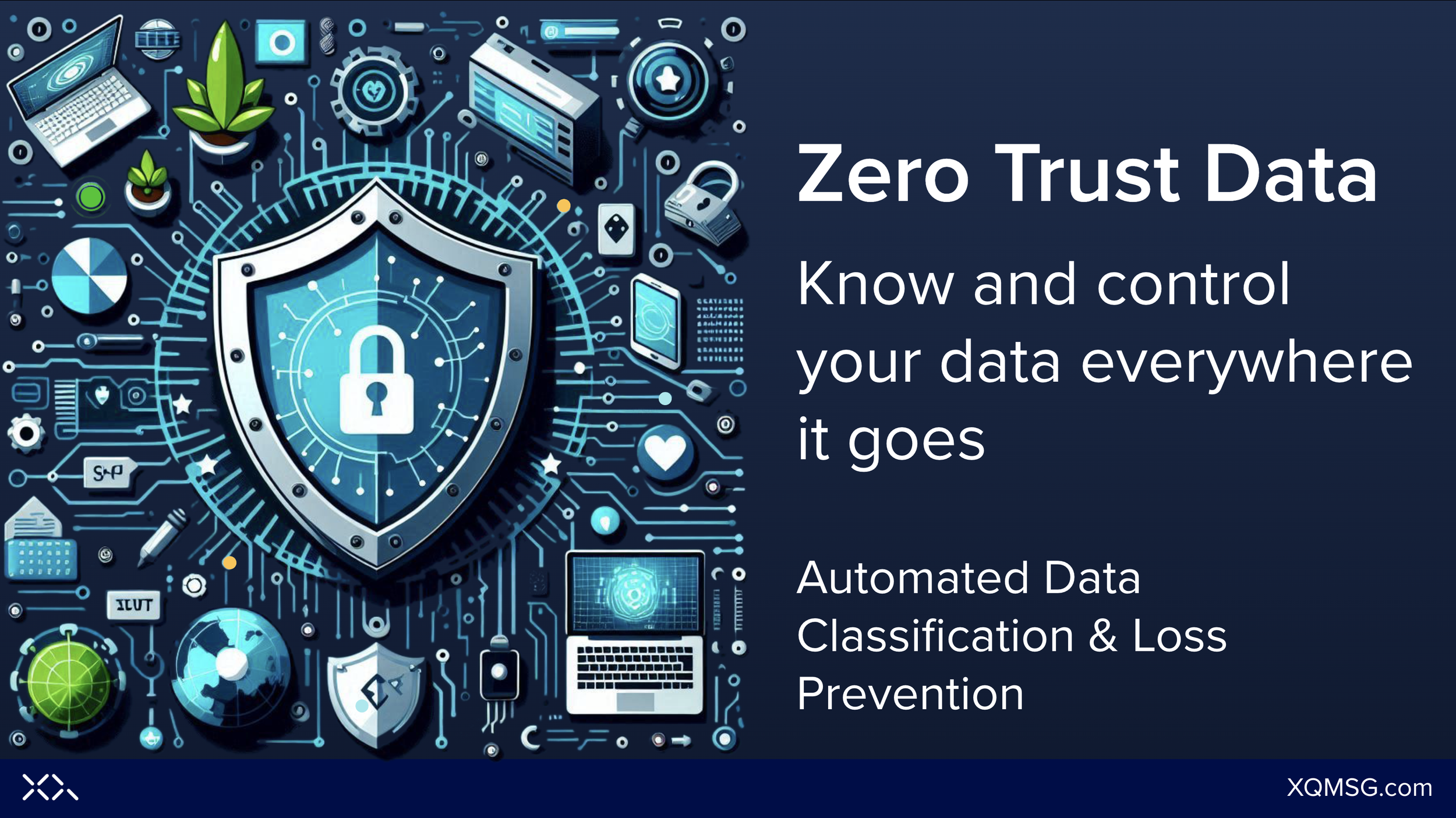Zero trust data centric protection
Automated Data Classification & Data Loss Prevention
Know, Protect, Monitor, and Control Your Data Everywhere
XQ is the leader in Zero Trust Data.
XQ’s proprietary Zero Trust Data architecture maximizes protection and control while reducing risk, overhead, and compliance challenges.
Zero Trust is a new security model being mandated by the US government for DoD and Federal agencies and Mission Critical industries.

Zero Trust Data Pillars
| Zero Trust Data Component | XQ Message Implementation |
|---|---|
| 1. Data Catalog Risk Assessment Multi-mission capability | XQ's Data Catalog serves as an inventory of data assets, helping organizations organize, find, and manage their data effectively. Providing risk assessments, this catalog prevents vulnerabilities, preventing security incidents, compliance violations, anddata breaches. In this fully decentralized architecture, encrypted data is cataloged, recording ID access, location, time, label, location, role, IP, and group. |
| 2. DoD Enterprise Data Governance Simplified Stewardship | Real-time monitoring of Data Ownership and Stewardship, Data Policies and Standards, Data Security and Privacy, Data Quality Management,Compliance and Risk Management, Data Integration and Interoperability. |
| 3. Data Labeling & Tagging Easier application support | XQ’s Zero Trust Data Solution incorporates advanced data tagging and labeling capabilities, enabling organizations to classify, encrypt, and enforce policies based on the sensitivity, location, and regulatory requirements of the data. |
| 4. Data Monitoring & Sensing Data exfiltration monitor | XQ’s Zero Trust Data Solution offers continuous data monitoring and sensing, along with real-time data exfiltration monitoring to detect and mitigate unauthorized data transfers. |
| 5. Data Encryption & Management Improved system performance | Crypto agile encryption enables different algorithms based on risk (post-quantum) or data type (structured and unstructured). UNique key creation at the edge segments credentials for each data object. XQ’s Zero Trust Data Solution offers advanced encryption capabilities paired with seamless key management to ensure that data is protected both at rest and in transit. |
| 6. Data Loss Prevention (DLP) Reduced data leakage | XQ's Zero Trust Data Solution strengthens Data Loss Prevention by enforcing data encryption, applying policy-based controls, and monitoring data flows to prevent leaks and ensure compliance with regulations. |
| 7. Data Access Control Coalition data sharing | Through XQ’s Zero Trust Data Solution, access control becomes more granular and dynamic, using encryption, identity verification, and policy enforcement to protect data across systems, environments, and regions. Access to protected data is only allowed after policy verification: identity, location, token, role, time, server type. |
Zero Trust Fundamentals
XQ never stores or handles client data on its servers. XQ Acts as an automated external keystore and policy server, utilizing edge agents in the client environment for encryption and policy enforcement.
XQ Enforces Data Loss Prevention in Transit and at Rest
XQ lives in the edge environment and micro-segments, encrypts, applies policies, and labels data.
XQ’s remote key & policy store creates a data leash across networks, throughout the lifecycle.
XQ enforces role-based access and creates data provenance from edge to cloud.
Zero Trust Data Unifies Security Across Environments
Automated Classification & DLP process
Understand, monitor and enforce access at the record level
| Independent Encryption | Each data object is secured with its own unique credentials |
| Classification & Labeling | The data is analyzed, and labels are applied based on its content and context |
| Role Assigned | Role Access assigned to data |
| Monitoring & Policy Enforcement | Data access attempts remotely controlled & logged |
XQ Zero-trust Upgrade
XQ enables software developers and solution providers to integrate Zero Trust Data into their applications. XQ has developed a library of software agents to support a range of platforms, from files and sensors connected to cloud computers and databases.






